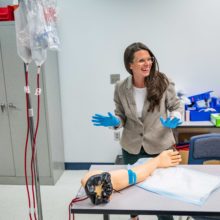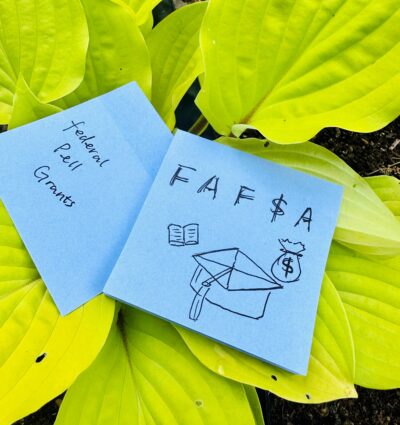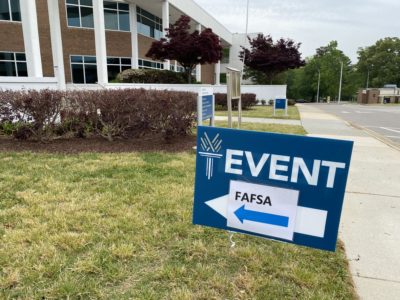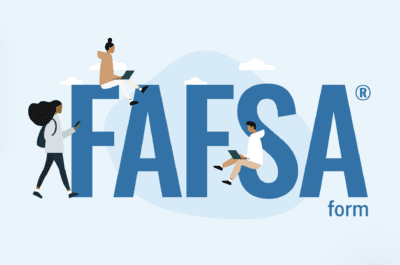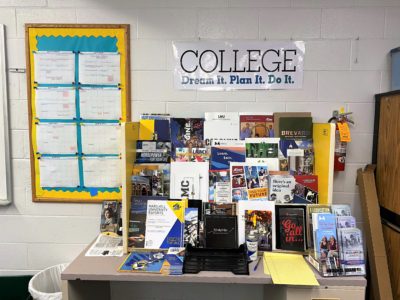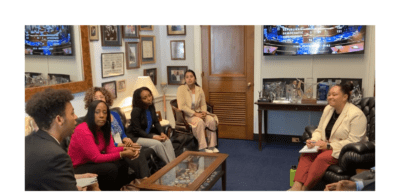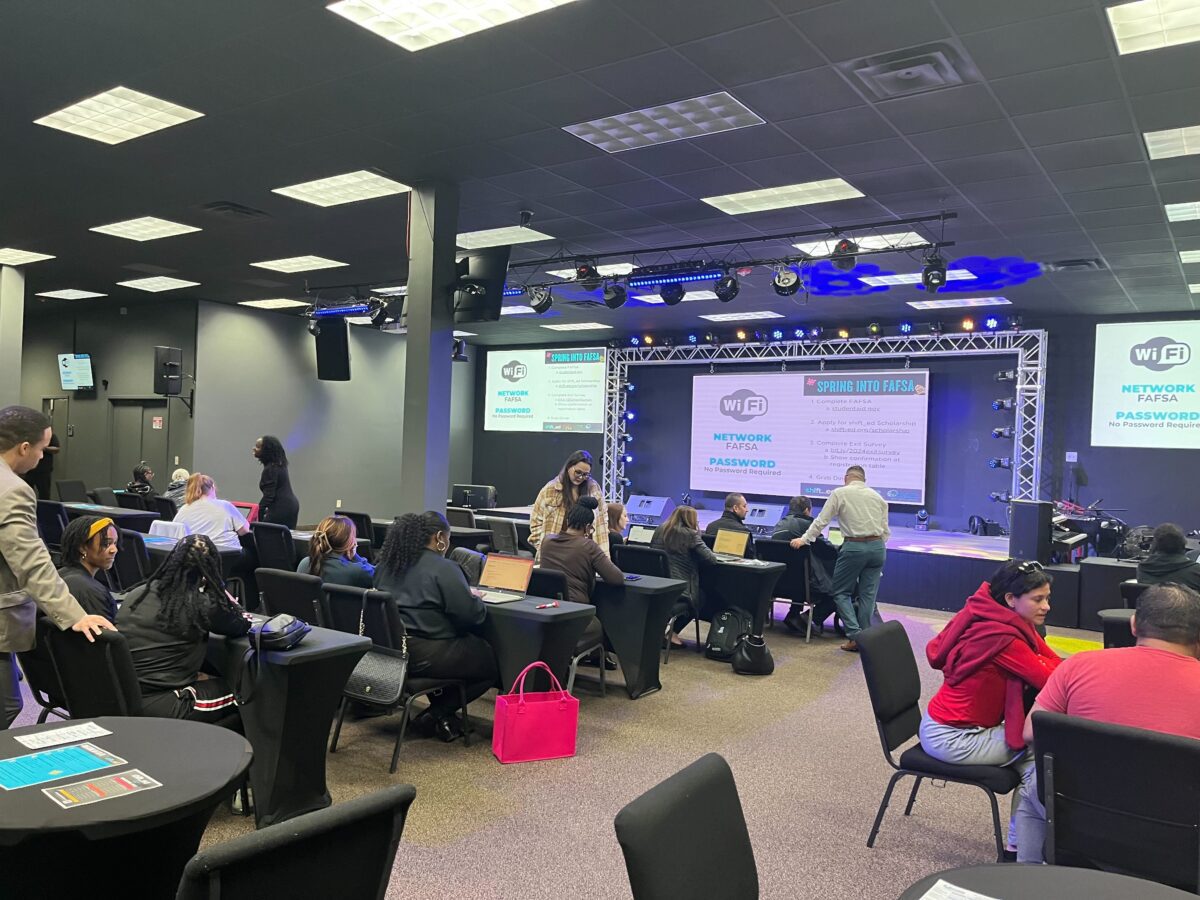
|
|
In a year marked by delays and technical issues, North Carolina school districts are finding creative ways to increase student completions of the Free Application for Federal Student Aid (FAFSA) across the state.
This year, five school districts (Charlotte-Mecklenburg Schools, Guilford County Schools, Iredell-Statesville Schools, Winston-Salem/Forsyth County Schools, and Union County Public Schools) are part of the John M. Belk Endowment (JMBE) grant initiative called FAFSA Strong. Districts are using the grant funding to encourage students to complete the FAFSA, offering everything from incentives to community-wide events with onsite financial aid experts to help families complete the application.
EdNC met with leaders from the five school districts, as well as other partners engaged in similar FAFSA efforts across North Carolina. Below we’ve compiled lessons learned, including how districts are increasing awareness, using strategic communication, and organizing events to drive more FAFSA completions.
Why FAFSA matters
In a 2009 longitudinal study completed by the U.S. Department of Education’s National Center for Education Statistics, completing the FAFSA is strongly associated with immediate postsecondary enrollment. Among the graduating class of 2013, 91.5% of students who completed a FAFSA were enrolled in postsecondary education as of November 2013, compared to 49.7% of students who did not complete the FAFSA.
“Notably, students from the lowest socioeconomic quintile who completed a FAFSA were 127% more likely to be enrolled in the fall following high school graduation than their counterparts without a FAFSA completion,” reads a summary of the study results from the National College Attainment Network (NCAN).
Students planning to attend college submit the FAFSA form to apply for federal grants, work-study funds, and loans. Plus, many states use students’ FAFSA information to determine eligibility for state and school aid.
According to the U.S. Department of Education, more than 13 million students who file the FAFSA get more than “$120 billion in grants, work-study, and low-interest loans.”
But there’s a huge gap between students who receive aid and the money that goes unused. In 2023, high school seniors left over $4 billion on the table in federal Pell Grants by not completing the FAFSA, according to NCAN.
FAFSA completion rates
According to recent data from NCAN, there have been 1,727,413 FAFSA completions nationally as of May 17, 2024. That’s 41.5% of the high school class of 2024. In comparison, last year at this time, 50.2% of high school seniors nationally had completed the FAFSA.
North Carolina ranks 31st in the nation with 38.2% of the state’s high school seniors having completed a FAFSA. You can view state-by-state data here.
Completing the FAFSA is more than just answering a few questions about finances. It requires students and their families to navigate a complex system filled with jargon that can be overwhelming – like filing taxes without the help of a program.
And while this year’s rollout of the Better FAFSA simplified the process – cutting down the number of questions applicants must answer – the three month delay and technical glitches have been burdensome for many.
It’s no surprise that advocates and educators are feeling a sense of urgency to increase FAFSA completions, especially considering how completing the application is linked to likelihood of college enrollment, receiving funds to help pay for college, credential attainment, and students entering the workforce with skills and training.
Organizing FAFSA efforts
Instrumental to any district or school strategy to increase FAFSA completions is having up-to-date FAFSA completion data, which districts can track in two ways.
The first is through the North Carolina State Education Assistance Authority’s FAFSA tracker, which tracks district and school-level FAFSA submissions and completions. Completion means the FAFSA application was “submitted and fully completed and is now being considered for financial aid.” Submitted means that the “application was sent in but may not have all required portions completed or may have errors.” The data in the tracker is updated weekly from October to June and bi-weekly thereafter.
Districts and authorized users can access student-level data by using the College Foundation of North Carolina’s Finish the FAFSA tool, which is an agreement with Federal Student Aid to allow users to see which students have submitted, completed, or not started the FAFSA. According to NCAN, most states have signed an agreement to receive this student-level data.
In year’s past, the agreement permitted districts, schools, and other approved organizations to access student-level data. This year, however, the agreement did not allow non-district partners, such as College Advising Corps and GEAR UP, to access the data until the end of April, according to Kathy Hastings, director of outreach and communications for the North Carolina State Education Assistance Authority (NCSEAA).
Increasing FAFSA completions requires a multi-layered approach. It takes on-the-ground work, specialized events, targeted messaging, incentives, intentional marketing, and partnerships to boost efforts, but more than anything, it’s about relationships.
“Getting students to complete, that’s the million dollar question,” Jessica Garner, director of college readiness for Union County Public Schools, said. “A lot of it comes down to trust and relationships.”
The five districts that participated in the FAFSA Strong initiative used the grant funding in a variety of ways, including paying counselors and bilingual interpreters, offering incentives to students and families, and hosting events. Each of the five districts also used grant funding to ramp up messaging in an effort to increase awareness about the FAFSA.

FAFSA messaging
Districts said they are using a multi-layered approach to communicate to students and families the importance of FAFSA completion. The initial, high-level communication is all about awareness.
FAFSA is directly tied to federal financial aid, but it also unlocks state aid and scholarships. It’s a fact of which some families, particularly those who think they may not qualify for federal Pell Grants, may not be aware.
Districts are using swag, yard signs, t-shirts worn by high school staff, QR codes, and social media to get the word out about the FAFSA, using phrases such as:
“Do you need money for college? Complete your FAFSA!”
“Cash for College!”
Several districts transitioned to calling their events ‘Scholarship Nights’ instead of ‘FAFSA Nights’ to better message how the FAFSA impacts multiple funding sources for college.
Districts are emailing students and families checklists for completing the FAFSA and linking to online resources. Some districts are offering virtual appointments with both English and Spanish-speaking counselors to help families start an application or correct errors from a previously submitted application.
Beyond the overall awareness messaging, districts are targeting messaging to individual students and families. High school counselors, college coaches, and advisors are using emails, text messages, and phone calls to communicate with students about their FAFSA status and necessary items needed to complete the FAFSA.
High school counselors and college access partners are compiling lists of students who have applied for college but not started, submitted, or completed the FAFSA. Information is sent to the students about next steps with an offer to work one-on-one with the student to complete the FAFSA. Emails are also being sent to students who have not indicated college plans, informing them of postsecondary possibilities and how completing the FAFSA can open the door to those options.
For students navigating this process alone or for families who may not have much experience with financial aid or postsecondary enrollment, having a caring adult willing to sit down and navigate the FAFSA application with them is critical.
“We forget how simple just plain encouragement is,” said Hastings.

Incentives for FAFSA completions
Food, friendly competition, and scholarships are all on the table when it comes to urging students to complete the FAFSA.
Several districts held raffles at special events and provided gift cards for students who attended and completed their FAFSA.
Union County Public Schools delivered biscuits to the high schools for their FAFSA completion efforts. If 25% of a high school’s senior class completed the FAFSA by March 1, every senior received a chicken biscuit. The district placed stickers on the packaging that read, “Don’t be a chicken. Do your FAFSA,” with a QR code to the district’s FAFSA support page.
Union County Public Schools also created an Instagram contest where any high school student could create a post or reel encouraging students to complete the FAFSA. Winners of the contest received a gift card.
Winston-Salem/Forsyth County Schools provided two $250 scholarships to every high school to use in a drawing for seniors who completed the FAFSA by May 15. At Iredell-Statesville, students who attended a FAFSA event and completed the FAFSA were entered into a drawing to receive a $500 scholarship.
Iredell-Statesville also started a competition in January called Doughnuts for Dollars. Every two weeks, high schools would total FAFSA completions, and the high school who had the most would receive fresh doughnuts. The district is also providing green graduation cords for all students who completed the FAFSA.
“That has been a popular push,” said Tim Woody, director of career and technical education at Iredell-Statesville Schools. “I know how much cords mean to kids, and in some situations, this might be the only cord a kid is wearing at graduation.”
Several districts also provided incentives, including stipends and lunch, to high school counselors who agreed to work extra hours helping students complete the FAFSA.
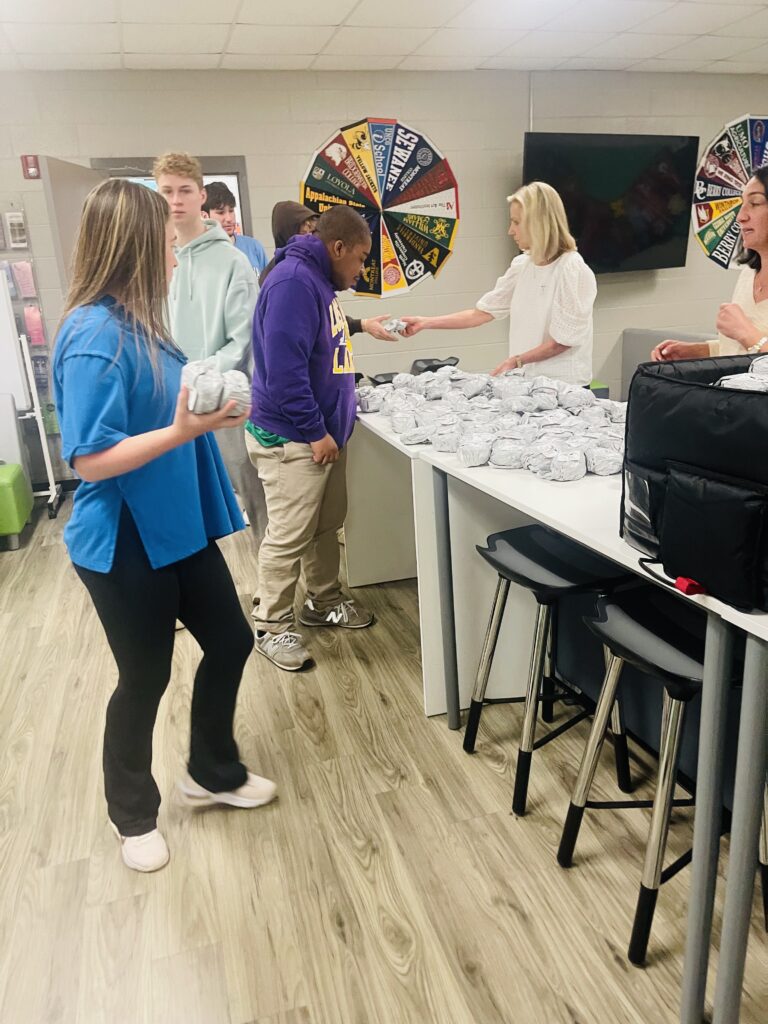

Hosting events
While districts have hosted events to help students and their families complete the FAFSA for years, several districts used the FAFSA Strong grant funding to be more strategic about how they organized the events.
Some districts provided mini-grants to participating high schools so they could host a FAFSA completion event in their community. Others used the grant funding to host larger, district-wide events in central community spaces. For some, the grant funding allowed districts to host more events than in previous years.
Most of the FAFSA completion events included food for families, a general overview of financial aid, and a time for families and students to work individually with a financial aid expert. These experts often included high school counselors, financial aid representatives from area colleges, and college access partners.
“We’ve partnered to put on four district events in two different locations around the city and provide food for families so they don’t have to choose between dinner and attending the event,” said Kenya Rocker, district lead high school counselor for Winston-Salem/Forsyth County Schools.
Some districts provided interpreters as well as child care for families during FAFSA events.

Partnerships and statewide efforts
While FAFSA Strong is highlighted throughout, it is just one of several initiatives aimed at helping districts increase FAFSA completions.
myFutureNC is working on a similar initiative with 37 school districts across the state called FAFSA Sprint. The organization is supporting the school districts with funding, providing pertinent FAFSA information, and connecting district and high school leaders with state and local resources.
Toni Blount, myFutureNC’s regional impact manager and FAFSA pilot coordinator, said she’s already seen great success connecting districts with College Foundation of North Carolina’s (CFNC) regional representatives who are highly trained to work with school staff, students, and families. The reps work to accelerate college access knowledge, the college application process, residency determination, FAFSA, and scholarships.
“Not only is myFutureNC the connector and convener in communities, we make sure that our districts are connected to CFNC, the regional reps, their services, and the reports on Pro Tools,” Blount said.
In 2019, North Carolina set an attainment goal that 2 million North Carolinians will hold a high-quality degree or credential by 2030. As CFNC notes, “An important early step in earning a credential is completing a FAFSA.”
Overall, increasing FAFSA completions requires buy-in and collaboration from districts, high school leaders and counselors, education stakeholders, college access partners, community colleges and universities, philanthropies, and businesses. It means relying on pre-existing partnerships with stakeholders who can help raise awareness, communicate FAFSA importance, and be of assistance to families completing the FAFSA.
North Carolina’s second annual Financial Aid Summit where school district financial aid leaders and partner organizations will gather to discuss strategies around postsecondary attainment and FAFSA completion is scheduled for June 26-27.
Editor’s note: The John M. Belk Endowment supports the work of EducationNC.
